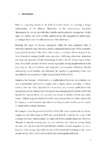Neighborhood inequality and spatial segregation: An analysis with tax data for 40 Spanish cities

Use this link to cite
http://hdl.handle.net/2183/39214
Except where otherwise noted, this item's license is described as Atribución-NoComercial-SinDerivadas 4.0
Collections
- Investigación (FEE) [923]
Metadata
Show full item recordTitle
Neighborhood inequality and spatial segregation: An analysis with tax data for 40 Spanish citiesDate
2021Citation
Martín Legendre, J.I, Castellanos-García, P. & Sánchez Santos, J.M. (2021). Neighborhood inequality and spatial segregation: An analysis with tax data for 40 Spanish cities. Cities, 118, 1 – 13. DOI: 10.1016/j.cities.2021.103354
Abstract
[Abstract]: In this paper, we analyse the income distributions in 40 Spanish cities at the neighborhood level using tax data
for the 2013–2018 period recently published by the national Tax Agency. To accomplish this, we use several
inequality indicators, including the Gini coefficient and the Theil index, whose decomposition allows us to
examine the level of segregation of the municipalities in the sample in depth. Our results reveal that the period
immediately following the last economic crisis was characterized by an increased income concentration at the
top of the distribution, which was mainly due to rising differences within the districts of each city, and by an
incipient trend towards greater segregation by income level in the cities under analysis. Moreover, there are
significant differences in inequality in the urban centres studied that are not necessarily attributable to the size of
their population. Finally, over the period under review, the dependence on labour income and the tax burden
were further reduced in the wealthiest districts.
Keywords
Income distribution
Income inequality
Neighborhood inequality
Urban planning
Urban segregation
Income inequality
Neighborhood inequality
Urban planning
Urban segregation
Description
This version of the article has been accepted for publication, after peer review, but is not the Version of Record and does not reflect post-acceptance improvements, or any corrections. The Version of Record is available online at: https://doi.org/10.1016/j.cities.2021.103354
Editor version
Rights
Atribución-NoComercial-SinDerivadas 4.0
ISSN
0264-2751






